If there’s one thing that the doting parents of Taipei American School (TAS) care fervently about (besides their children’s SAT scores), it’s nourishing young minds. The international food fair organized by the Parent Teacher Association (PTA) is an event that draws thousands of foodies from the expat community of suburban Tianmu and beyond every year. The fair returns tomorrow for its 33rd year.
From Vietnam to Venezuela, more than 20 countries are represented and around 8,000 visitors are expected to show up. In addition to sushi, samosas and shaved ice — all prepared by the gracious parents — there will also be arts and crafts stations, a bouncy castle, as well as a haunted house full of goblins and ghosts orchestrated entirely by the high school students.
Speaking on behalf of the PTA, Priya Purswaney says: “The parents put in a lot of hard work months before the event to ensure that it goes smoothly.”
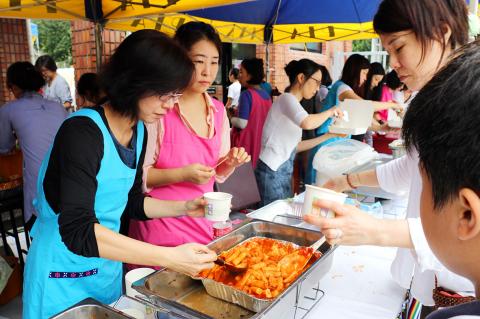
Photo courtesy of TAS
Purswaney adds that in recent years, the fair has drawn more volunteers from outside of the TAS community, and that local schools in Taipei even arrange field trips to visit the fair. More student associations and clubs at TAS have also been involved in planning the activities for this year’s fair, so expect to see new booths in addition to the usual face painting, water balloon toss and stands selling fake tattoos.
“The fair has become more international and features double the number of clubs, so that means double the fun,” Purswaney says.
Though it’s expected that when you bring a bunch of parents together, there’s bound to be some squabbles.

Photo courtesy of TAS
Nevertheless, the PTA says the preparation is mostly a concerted effort, and that what’s more important is that the parents have the students’ well-being at heart.
“The only thing the TAS parents get out of it is the satisfaction of doing something for the school,” Purswaney says.
If there’s one thing they can agree upon though, it’s promoting healthy eating (never mind the cotton candy stand that seems to have the longest line every year). The school’s cafeteria does indeed have an amazing assortment of gourmet dishes that would put many seasoned restaurateurs to shame. As for the fair, the food is mostly home-cooked or sponsored by top restaurants around Taipei.
“It’s definitely important to teach children at an early age the importance of a healthy diet.” Purswaney says. “The TAS cafeteria is a no fry zone, and vendors at the fair are also encouraged to reduce the amount of fried goods.”
The food fair starts tomorrow at 10am and is open to the public. A portion of the proceeds will go to developing the school, while the rest of the funds is allocated to different charities each year.
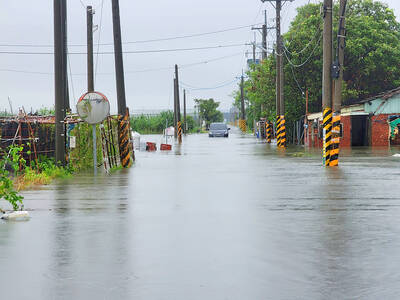
Water management is one of the most powerful forces shaping modern Taiwan’s landscapes and politics. Many of Taiwan’s township and county boundaries are defined by watersheds. The current course of the mighty Jhuoshuei River (濁水溪) was largely established by Japanese embankment building during the 1918-1923 period. Taoyuan is dotted with ponds constructed by settlers from China during the Qing period. Countless local civic actions have been driven by opposition to water projects. Last week something like 2,600mm of rain fell on southern Taiwan in seven days, peaking at over 2,800mm in Duona (多納) in Kaohsiung’s Maolin District (茂林), according to
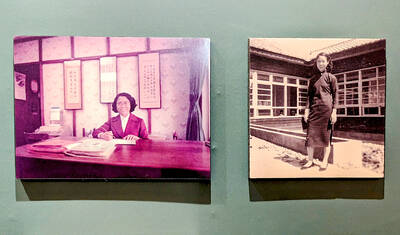
Aug. 11 to Aug. 17 Those who never heard of architect Hsiu Tse-lan (修澤蘭) must have seen her work — on the reverse of the NT$100 bill is the Yangmingshan Zhongshan Hall (陽明山中山樓). Then-president Chiang Kai-shek (蔣介石) reportedly hand-picked her for the job and gave her just 13 months to complete it in time for the centennial of Republic of China founder Sun Yat-sen’s birth on Nov. 12, 1966. Another landmark project is Garden City (花園新城) in New Taipei City’s Sindian District (新店) — Taiwan’s first mountainside planned community, which Hsiu initiated in 1968. She was involved in every stage, from selecting
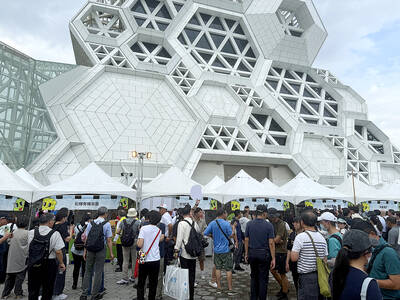
The latest edition of the Japan-Taiwan Fruit Festival took place in Kaohsiung on July 26 and 27. During the weekend, the dockside in front of the iconic Music Center was full of food stalls, and a stage welcomed performers. After the French-themed festival earlier in the summer, this is another example of Kaohsiung’s efforts to make the city more international. The event was originally initiated by the Japan-Taiwan Exchange Association in 2022. The goal was “to commemorate [the association’s] 50th anniversary and further strengthen the longstanding friendship between Japan and Taiwan,” says Kaohsiung Director-General of International Affairs Chang Yen-ching (張硯卿). “The first two editions
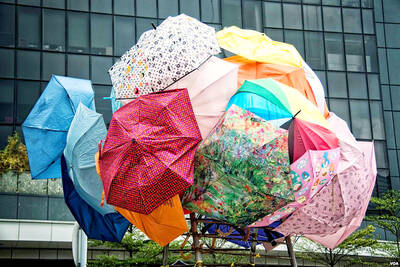
It was Christmas Eve 2024 and 19-year-old Chloe Cheung was lying in bed at home in Leeds when she found out the Chinese authorities had put a bounty on her head. As she scrolled through Instagram looking at festive songs, a stream of messages from old school friends started coming into her phone. Look at the news, they told her. Media outlets across east Asia were reporting that Cheung, who had just finished her A-levels, had been declared a threat to national security by officials in Hong Kong. There was an offer of HK$1m (NT$3.81 million) to anyone who could assist